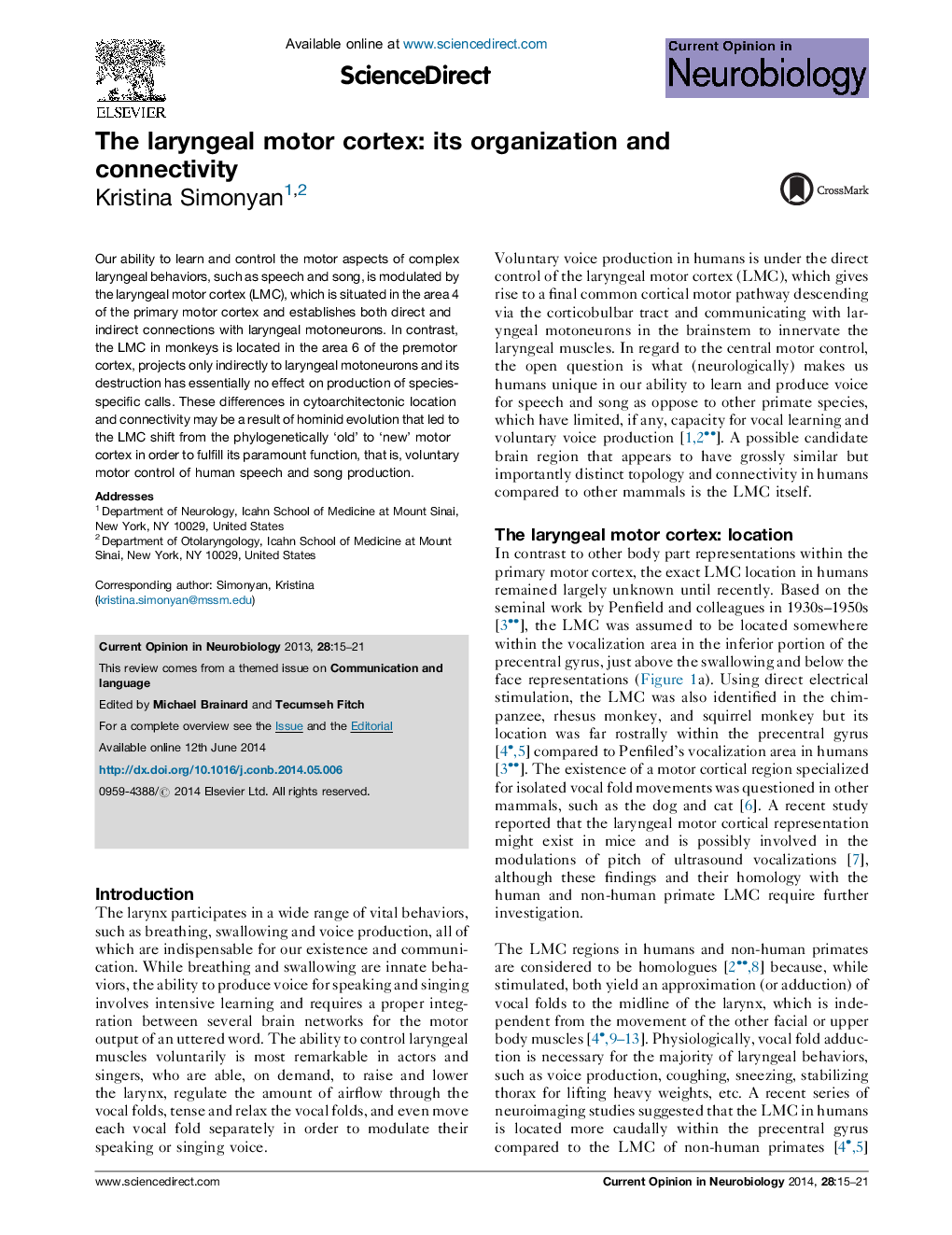| Article ID | Journal | Published Year | Pages | File Type |
|---|---|---|---|---|
| 6266650 | Current Opinion in Neurobiology | 2014 | 7 Pages |
â¢Laryngeal motor cortex is indispensable for human but not monkey vocal motor control.â¢It is located in the area 4 in humans but in the area 6 in non-human primates.â¢It establishes direct (monosynaptic) connection with laryngeal motoneurons in humans only.â¢A shift of laryngeal representation from the primary motor to premotor cortex may be a result of hominid evolution.
Our ability to learn and control the motor aspects of complex laryngeal behaviors, such as speech and song, is modulated by the laryngeal motor cortex (LMC), which is situated in the area 4 of the primary motor cortex and establishes both direct and indirect connections with laryngeal motoneurons. In contrast, the LMC in monkeys is located in the area 6 of the premotor cortex, projects only indirectly to laryngeal motoneurons and its destruction has essentially no effect on production of species-specific calls. These differences in cytoarchitectonic location and connectivity may be a result of hominid evolution that led to the LMC shift from the phylogenetically 'old' to 'new' motor cortex in order to fulfill its paramount function, that is, voluntary motor control of human speech and song production.
